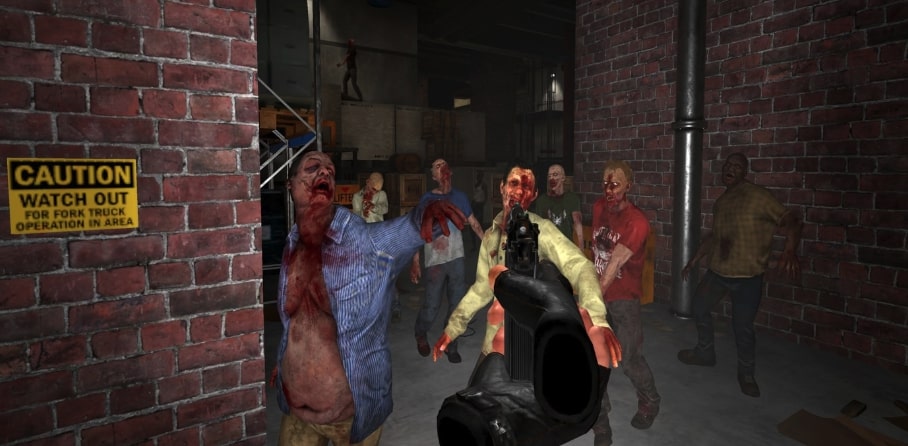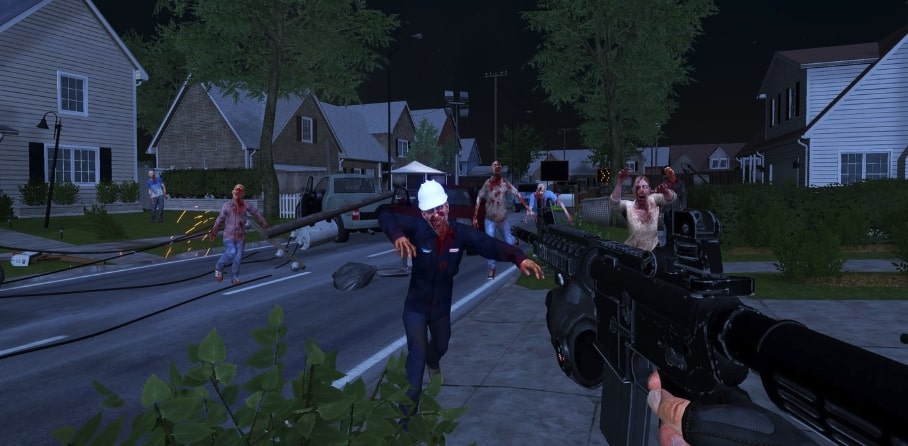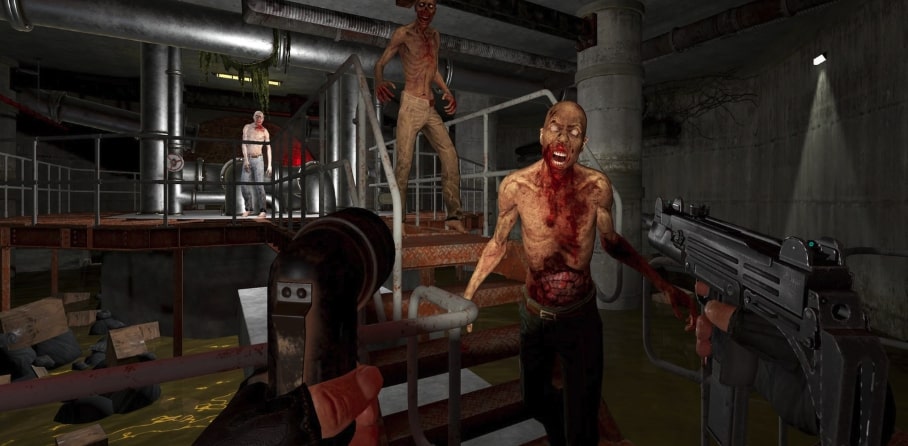Zombie shooters dominate VR libraries, yet most prioritize wave-based survival over narrative substance. The Living Remain shatters this mold-it’s a story-driven campaign built exclusively for Meta Quest, merging visceral combat with emotional stakes. Unlike typical undead slayers, it leverages VR’s immersion to explore human resilience amid apocalypse, demanding strategic choices beyond trigger reflexes.
Introduction: Beyond the Shambling Hordes
This arrives when Quest hardware evolves rapidly. Accessories like the KIWI K4 Duo audio head strap heighten immersion, while visual upgrades in titles like Green Hell VR demonstrate Meta’s push for richer experiences. Simultaneously, industry turbulence-like Romero Games’ closure-highlights risks for narrative FPS projects. Yet player hunger persists, evidenced by expansions for RoboCop: Rogue City and Deep Rock Galactic’s gear systems.

For Quest owners, The Living Remain represents more than gore. It’s a chance to experience environmental storytelling through motion-tracked reloads and spatial audio whispers. While wave shooters fatigue, this campaign offers progression: weapon customization impacting plot branches, character bonds affecting endings. Your headset becomes a conduit for desperation, not just decapitations.
In a landscape craving depth-where even extraction shooters add railgun crafting-this game answers with psychological weight. Zombies aren’t targets; they’re tragic echoes. Every drained battery in your headset mirrors the protagonist’s dwindling hope, making survival personal.
Mechanics and Immersion: Where Choice Shapes Catastrophe
Weapon customization directly fuels narrative divergence in The Living Remain. Attach a suppressor? You’ll bypass hordes undetected but miss critical intel from forced confrontations. Opt for a scope? Precision saves allies during sniper sequences, unlocking dialogue trees that reveal hidden backstories. Unlike RoboCop: Rogue City’s expansion-which adds guns as novelty-each mod here carries psychological weight. A sawed-off shotgun sacrifices range for raw power, echoing your descent into brutality; its deafening blast in VR rattles your bones via haptics, making every upgrade ethically tangible.

Meta Quest 3’s hardware transforms isolation into intimacy. The KIWI K4 Duo head strap’s directional audio amplifies environmental storytelling: a sobbing child’s whimper shifts directionally as you turn, forcing moral choices in real-time. Visual parallels Green Hell VR’s recent Quest 3 upgrade-enhanced shadow rendering and texture density-make decay visceral. Rotting wallpaper peels in layered physics; blood splatters dynamically on your virtual gloves. These aren’t graphical flourishes but narrative devices: a pristine family photo amid rubble hits harder when pixels don’t blur.
Romero Games’ closure underscores the gamble. Yet player data defies pessimism: Deep Rock Galactic’s gear system-adding 37% playtime retention according to Steam metrics-proves demand for meaningful progression. The Living Remain answers with branching loyalty mechanics. Protect a character during a hoard assault? They gift rare weapon blueprints later. Abandon them? Your camp morale plummets, triggering resource shortages. Such cause-and-effect loops elevate zombies beyond target practice-they become consequences of failed diplomacy.
Resource scarcity integrates hardware limitations. Headset battery warnings mirror in-game power drains-your flashlight dims as your charge depletes, syncing physical and virtual vulnerability. Motion-tracked reload jams during panic sequences create authentic stress; fumbling shells while a zombie lunges teaches strategic ammo conservation. Extraction shooters like The Forever Winter add railguns for spectacle, but here a simple pistol feels monumental because VR grounds its impact in bodily tension.

Meta’s Quest 3S Xbox Edition sell-out signals audience readiness. The Living Remain leverages this with unobvious interactions: hold your breath physically to steady sniper aim, or tilt your head to peek around corners-mechanics that punish haste. Zombie designs avoid clichés; some shamble, others sprint with broken athleticism, their movements mocapped from parkour injuries. This diversity demands adaptive tactics, transforming each encounter into a survival puzzle rather than a trigger-spam test.
Conclusion: Forging VR’s Narrative Future
The Living Remain transcends zombie shooter conventions by weaponizing VR’s physicality for psychological storytelling-where your headset’s dying battery synchronizes with protagonist despair, and directional audio forces ethical snap judgments. This ambition arrives amidst industry crosswinds: Romero Games’ closure reveals narrative FPS fragility, yet Quest 3S Xbox Edition’s sell-out and Deep Rock Galactic’s 37% retention spike from gear systems prove players crave meaningful progression. Your support for such innovations directly fuels VR’s evolution beyond wave-based repetition.
Maximize immersion through deliberate hardware preparation. Recalibrate headsets like the KIWI K4 Duo to ensure spatial audio precision-misaligned drivers could mute critical environmental whispers hinting at branching paths. Treat low-battery warnings as narrative devices rather than interruptions; let your flashlight dimming deepen tension organically. Unlike RoboCop’s expansion adding superficial guns, every choice here-even breath-holding during sniper sequences-carries emotional consequence. Future VR narratives must follow this blueprint: integrating limitations like motion-tracked reload jams as storytelling tools rather than technical compromises.
Champion titles prioritizing moral weight over gore count. The Living Remain demonstrates how hardware constraints can birth creativity-zombie diversity (mocapped from parkour injuries) demands tactical adaptation, while loyalty mechanics transform allies into strategic resources. As Meta’s ecosystem grows, demand experiences where your physical presence alters outcomes. This isn’t just gameplay; it’s proof VR can make isolation profoundly human when mechanics serve story instead of spectacle.

